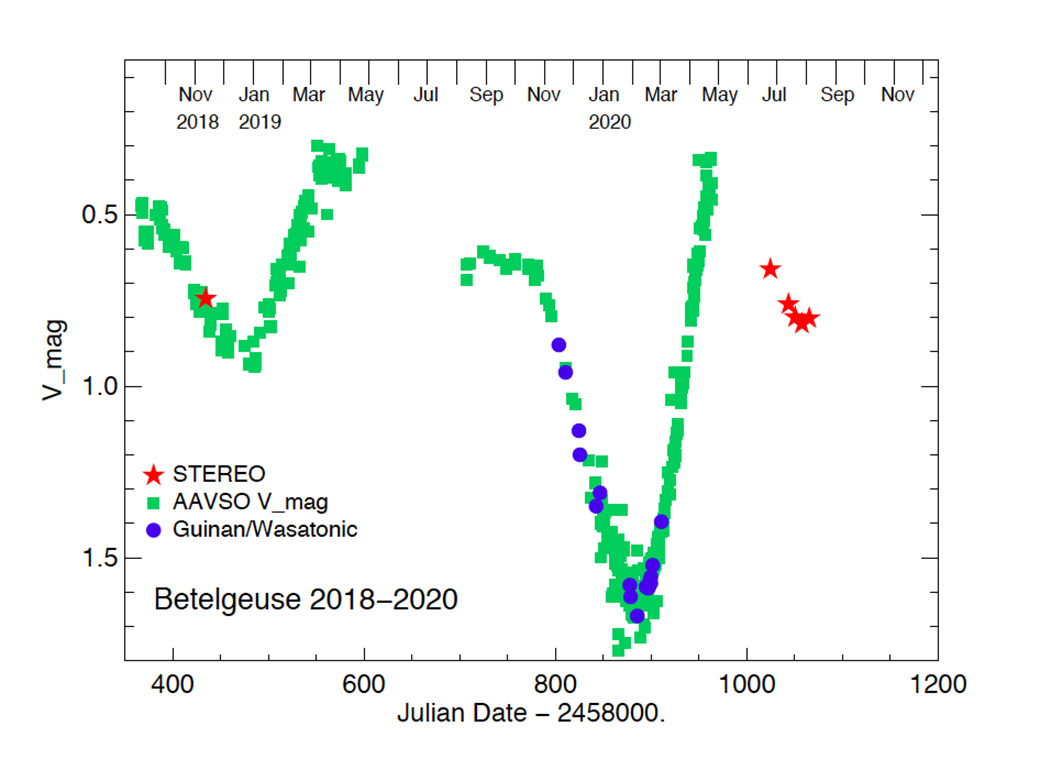Image List
-

This four-panel graphic illustrates how the southern region of the rapidly evolving, bright red supergiant star Betelgeuse may have suddenly become fainter for several months during late 2019 and early 2020. In the first two panels, as seen in ultraviolet light with the Hubble Space Telescope, a bright, hot blob of plasma is ejected from the emergence of a huge convection cell on the star's surface. In panel three, the outflowing expelled gas rapidly expands outward. It cools to form an enormous cloud of obscuring dust grains. The final panel reveals the huge dust cloud blocking the light (as seen from Earth) from a quarter of the star's surface.
NASA, ESA, and E. Wheatley (STScI) -

This spectral plot is based on Hubble Space Telescope observations from March 2019 to February 2020. Hubble recorded a surprising outburst in the atmosphere of the nearby red supergiant star Betelgeuse. Measurements of emission from magnesium II were used to trace motion in the star's pulsating atmosphere. Hubble's Space Telescope Imaging Spectrograph captured a dramatic increase in the brightness of magnesium emission in October 2019, in the southeast region of the star, as outlined by the white circle. (Betelgeuse is close enough and big enough for Hubble to resolve the star's enormous disk.) This traumatic event was different from what is normally seen in the star's 420-day pulsation period. At the same time in October, the star abruptly began dimming. This fading continued until February 2020, at which time the Hubble ultraviolet spectral data had returned to normal. The outburst is suspected to have ejected a cloud of hot plasma that cooled to form dust that blocked out a significant portion of the star's light for a few months. Hubble's long baseline of monitoring the star helped put the puzzle pieces together.
NASA, ESA, A. Dupree (CfA), and E. Wheatley (STScI) -

An image from NASA's STEREO spacecraft shows the star Betelgeuse, circled. For several weeks in 2020, STEREO was the only observatory making measurements of Betelgeuse because of the spacecraft's unique position in space.
NASA/STEREO -

This figure shows measurements of Betelgeuse's brightness from different observatories from late 2018 to present. The blue and green points represent data from ground-based observatories. The gaps in these measurements happen when Betelgeuse appears in Earth's day sky, making it impossible to take precise brightness measurements. During this observation gap in 2020, NASA's STEREO spacecraft — with measurements shown in red — stepped in to observe Betelgeuse from its unique vantage point, revealing unexpected dimming by the star. The 2018 data point from STEREO was found in the mission’s archival data and was used to calibrate STEREO's measurements against other telescopes.
Dupree, et al.